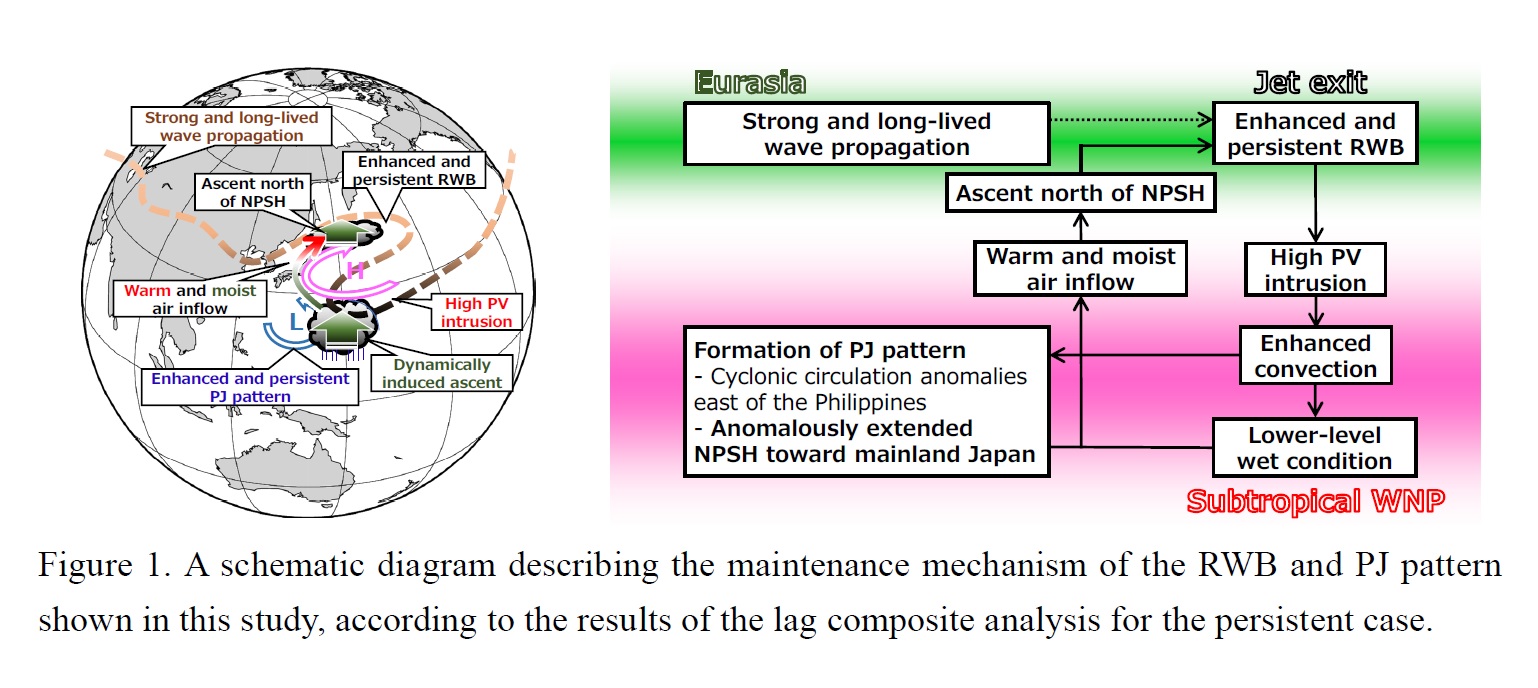Graphical Abstract
Takemura, K., and H. Mukougawa, 2020: Maintenance mechanism of Rossby wave breaking and Pacific-Japan pattern in boreal summer. J. Meteor. Soc. Japan, 98, 1183–1206.
https://doi.org/10.2151/jmsj.2020-061
Early Online Release
Graphical Abstract with highlights
Plain Language Summary: A maintenance mechanism for Rossby wave breaking (RWB) east of Japan and Pacific-Japan (PJ) pattern in boreal summer, which are triggered due to Rossby wave propagation along the Asian jet, is diagnosed by lag composite, correlation, and forward trajectory analyses, using a reanalysis dataset. A comparison between the composites of 7 persistent and 7 non-persistent cases, which are classified from the past 44 RWB cases, indicates that the persistent case shows the stronger and longer-lived Rossby wave propagation along the Asian jet. The subsequent stronger RWB in the persistent case causes the consequential formation of the more enhanced PJ pattern, through the stronger high potential vorticity intrusion toward the subtropical western North Pacific (WNP). The other main findings are summarized as follows.
Highlights:
- Q-vector diagnosis and partial correlation analysis indicate that the mid-tropospheric anomalous warm air advection north of the anomalously extended North Pacific Subtropical High (NPSH) associated with the PJ pattern is closely associated with dynamically induced anomalous ascent from Japan to the east by an adiabatic process.
- Enhanced anomalous moisture flux convergence from Japan to the east, which is due to moisture inflow along the fringe of NPSH from the subtropical WNP, also causes the anomalous ascent over the region by a diabatic process.
- The anomalous ascents by the adiabatic and diabatic processes contribute to the enhanced and persistent RWB with nearly equivalent associations, through negative vorticity tendency due to vortex squashing in the upper troposphere, which further contributes to the enhanced and persistent PJ pattern in the persistent case.







